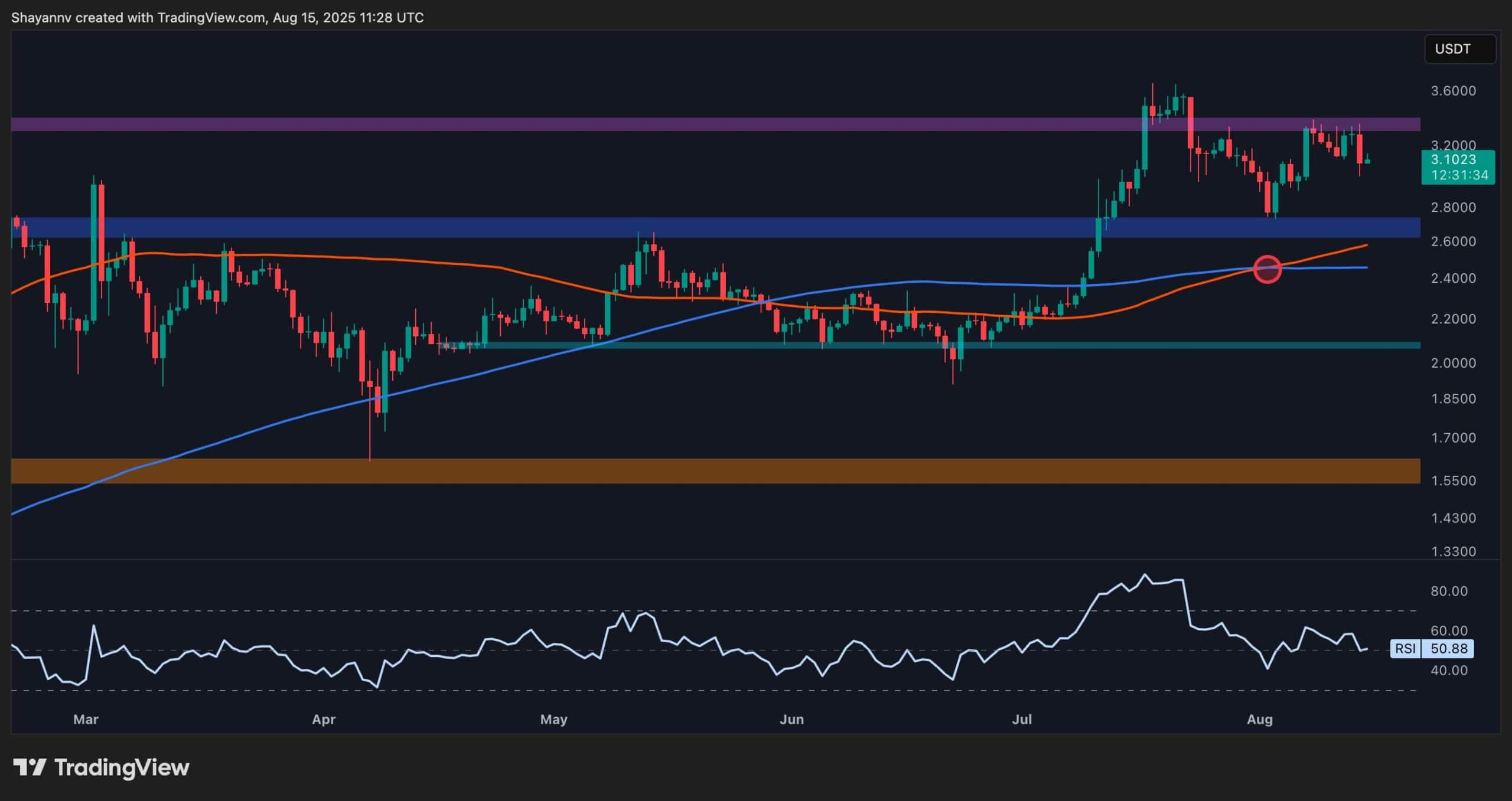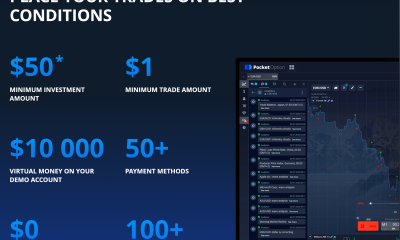Cryptocurrency
Are Corporate BTC Piles Good or Bad for Bitcoin?

This year US corporations have begun stockpiling Bitcoin treasuries in earnest as the race for 21 million BTC tokens continues. This creates enormous structural support for market prices. But is it ideal?
After setting a historic record high around $109,000 on Jan. 21, Bitcoin prices retraced back to $82,000 by mid-April. After that they skyrocketed to another record around $112,000 in May.
Supporting these sea level changes in Bitcoin’s global capitalization is a spree of corporate BTC buys in Q1 and Q2 that signal a paradigm shift in the demand for these highly valued cryptographic hash tokens.
Is it all good news for Bitcoin and cryptocurrencies?
Here is why it may be good:
1. Institutional Validation
Bitcoin price news headlines and searches for cryptocurrency on Google periodically erupt along with bull runs on the currency. Still, not everyone is sure if it is a good idea to invest.
Many investing and financial authorities like NYU Econ. Professor Nouriel Roubini and EuroPac Chief Peter Schiff are skeptical or highly critical of Bitcoin.
It ROIs are in another league entirely compared to US stocks and private placement investments by accredited investors and high net worth individuals. While that attracts many investors, others don’t understand how it is possible or sustainable.
Institutional validation for Bitcoin investing signals signals to investors with a similar view of the world that BTC markets are really on to something. If corporations are hoarding Bitcoin then it’s probably real and safe.
When public companies like MicroStrategy, Tesla, or Square buy Bitcoin, it legitimizes Bitcoin as a treasury asset. Bitcoin is not just a speculative tool for them, but a long-term store of value.
2. Reduced Sell Pressure
In addition to creating a bandwagon effect and fear of missing out among new entrants to crypto markets, the treasury race is locking up supplies and reducing sell pressure.
Basic supply and demand economics dictates this creates price support for the underlying good or commodity. Bitcoin’s brutally deflationary design boosts this effect on token prices.
Corporate treasuries typically buy to hold long-term, not trade. For Bitcoin, Strategy and others have indicated they have no plans to ever sell their holdings.
3. Onboarding Traditional Finance
Corporate adoption creates incentives for developers to build bridges from Bitcoin to TradFi (traditional finance). Because Bitcoin is maintained by software on an open peer network, the field is wide open for app development.
The TradFi layer is excited by the advantages of automating financial services exemplified by Bitcoin’s success. This encourages blockchain developers to build more institutional tools (e.g., ETFs, custody, derivatives), making it easier for others to follow.
Institutional finance has shown some interest in building an Ethereum app layer that offers automated financial services backed by Bitcoin layer tokens.
While this sector is still in its early stages, if it takes off, BTC tokens may be undervalued at current record market prices near historical record highs.
4. Network Effect Growth
In general system theory, network effects describe the growth of ordered phenomena in an organized system along the lines of positive feedback loops.
Meanwhile, in industrial business theory the concept denotes the simple, but powerful tendency of a market, platform, good, or service to increase in value as more participants begin to use it.
Naturally, the more high-profile holders of Bitcoin there are, the more attention and trust Bitcoin gets.
When large, established corporations regularly traded on Wall Street enter the fray, there is more safety and value in numbers.
Bitcoin investment strategist Lyn Alden says that Bitcoin’s network effects support its long term price growth because:
- It resolves hard forks through market capitalism
- Developers build new layers like Lightning Network
- mega companies like Fidelity now serve customer demand with BTC custody services
5. Defensive Hedge Narrative
Corporation are conservative with their finances because they have to make payroll and please investors. If they’re investing in Bitcoin by the half a billion dollars’ worth at a time like GameStop did in May, then it must be a good macro hedge for more conservative investors.
Companies taking a defensive financial posture using BTC reinforces Bitcoin’s role as a hedge against fiat debasement, inflation, and systemic risk. Some leaders in corporate America are beginning to treating it like “digital gold” — a modern reserve asset.
Furthermore, Sen. Cynthia Lummis (R-WY) recently said that she has spoken with Defense Department generals who say they agree Bitcoin is critically important as a national strategic advantage for national security.
6. FOMO Effect on Other Institutions
Meanwhile, as more companies add BTC, it pressures others to consider it or risk falling behind (especially in financial returns or treasury innovation).
At some point the network effect of corporate Bitcoin stockpiles could snowball so far that Wall Street companies must hold some cryptocurrency treasuries to avoid a systemic shortfall against other corporate balance sheets.
This is what early Bitcoin promoter Andreas Antonopoulos once referred to in an episode of the Joe Rogan Experience as “infrastructure inversion.” He argued it would be an inevitable feature of Bitcoin’s success if the crypto were to ever become mainstream.
But here is why corporate BTC treasuries may be bad for crypto markets:
1. Centralization of Holdings
As corporations amass large BTC holdings, power and influence concentrate among a few key treasuries like those at Strategy and BlackRock, to back its Bitcoin ETF issuance.
That goes against Bitcoin’s decentralized ethos if a few entities control major stakes.
While, theoretically, it can’t pose a risk to the system, because ownership is not correlated to network validation and security (hashrate is), it can still have a negative effect. Imagine an entity controlling 5% of Bitcoin’s total supply being forced to start liquidating its holdings.
This is especially troublesome if the entity is a centralized corporation, the operation and control of which, at best, fall within a board of directors or, at worst, within a certain executive.
Moreover, centralization of holdings could deter investors from coming in because of the above concerns alone.
2. Speculative Overreach
In addition to over-centralization there’s the risk of speculative overreach. Companies may be buying to chase hype rather than for sound financial strategy.
Bitcoin bubbles are already bad. But the corporate treasury race could make the ride bumpier for smaller investors by causing more bubbles, steeper rides up, and more drastic corrections.
That could lead to more painful liquidations or bankruptcies in serious market downturns, damaging Bitcoin’s image and reputation with investors. In the crypto winter of 2022, the weakest link in the chain was corporations that held Bitcoin like Celsius, FTX, and others.
3. Price Instability Risk
Bitcoin ownership stratification and choppier waters could make its price more volatile.
For example, large corporate holders may be apt to sell massive amounts of BTC during crises just as they have snapped it up during this rally. That could crash the market due to the size of their positions.
This adds systemic volatility to an already volatile asset. Market participants always have to balance in the outlook for their forward valuations the possibility that a large ship in harbor could set sail.
4. Distorted Use Case
Bitcoin may become seen primarily as a corporate hedge or balance sheet gimmick, not as usable money. This is an ongoing debate among the online community of crypto enthusiasts.
Some like Strategy’s Michael Saylor say Bitcoin’s real role in the global financial ecosystem has emerged as an automated and completely democratic platform for final settlement in scarce digital tokens with a bearer instrument quality.
Others say this distracts from Bitcoin’s original mission of being a decentralized peer-to-peer currency. There is no consumer demand for Bitcoin this way as a daily spender, only financial and investment demand.
Binance Free $600 (CryptoPotato Exclusive): Use this link to register a new account and receive $600 exclusive welcome offer on Binance (full details).
LIMITED OFFER for CryptoPotato readers at Bybit: Use this link to register and open a $500 FREE position on any coin!
Cryptocurrency
Ethereum Foundation, Whales, and Hackers: What’s Driving the ETH Sell-Off?

TL;DR
- Whales, hackers, and the Ethereum Foundation wallets moved over $500M in ETH through large sales and withdrawals.
- Ethereum transfers rose to 4.6M ETH, nearing the monthly high of 5.2M recorded in July.
- Staking inflows hit 247,900 ETH, the highest in a month, locking more supply from trading.
Large Withdrawals and Whale Activity
Ethereum (ETH) has seen heavy movement from major wallets over the past few days. On-chain data from Lookonchain shows a newly created wallet pulled 17,591 ETH, worth $81.62 million, from Kraken in just two hours.
Over three days, two new wallets withdrew a combined 71,025 ETH, valued at $330 million, from the exchange.
One of these wallets, address 0x2A92, has withdrawn 53,434 ETH, worth $242.34 million, in two days. This includes a recent purchase of 30,069 ETH, valued at $138.46 million, during a market drop.
Major ETH Holders Offload Millions Amid Price Rally
In contrast, several separate entities have been disposing of some ETH holdings. A wallet tied to a hacker address 0x17E0 sold 4,958 ETH for $22.13 million at $4,463, securing a profit of $9.75 million. Earlier this year, the same address sold 12,282 ETH at $1,932 and later bought back part of the amount at higher prices.
A different whale sold 20,600 ETH for $96.55 million over the past two days, generating a profit of more than $26 million after holding the position for nine months.
Meanwhile, an Ethereum Foundation-linked wallet, 0xF39d, sold 6,194 ETH worth $28.36 million in the last three days at an average price of $4,578.
Recent sales from the same wallet included an additional 1,100 ETH and 1,695 ETH for over $12.7 million combined.
The #EthereumFoundation-linked wallet(0xF39d) sold another 1,300 $ETH($5.87M) at $4,518 ~11 hours ago.
Over the past 3 days, this wallet has sold a total of 6,194 $ETH($28.36M) at an average price of $4,578.https://t.co/4hfCWymHVG pic.twitter.com/ErUyEY8SJy
— Lookonchain (@lookonchain) August 15, 2025
Network Activity on the Rise
CryptoQuant data shows Ethereum’s total tokens transferred have been climbing since August 9. After ranging between 1 million and 3 million ETH through late July and early August, transfers have risen to 4.6 million ETH, approaching the monthly high of 5.2 million recorded in mid-July. This increase has occurred alongside a price rally from about $3,400 to $4,600.
Interestingly, staking inflows generally stayed between 20,000 and 80,000 ETH per day over the past month. On August 14, inflows jumped to 247,900 ETH, the highest in the period.
At the time, ETH was trading near $4,600. Large staking deposits reduce the amount of ETH available for immediate trading, as staked coins are locked for a set period.
In the meantime, ETH trades at $4,647 with a 24-hour volume of $68.25 billion, down 2% on the day but up 19% over the week.
Binance Free $600 (CryptoPotato Exclusive): Use this link to register a new account and receive $600 exclusive welcome offer on Binance (full details).
LIMITED OFFER for CryptoPotato readers at Bybit: Use this link to register and open a $500 FREE position on any coin!
Cryptocurrency
Massive DOGE Whale Activity Hints at $1 Breakout

TL;DR
- Whales bought two billion DOGE this week, lifting their combined holdings to 27.6 billion coins.
- A single 900M DOGE transfer worth $208M to Binance drew attention to large exchange movements.
- DOGE broke key resistance, with momentum building for a possible push toward the $1 price mark.
Price and Market Moves
Dogecoin (DOGE) traded at $0.23 at press time, slipping 4% over the past day but still showing a 2% gain for the week. Daily turnover came in at about $6.18 billion.
Meanwhile, the broader crypto market saw over $1 billion in liquidations. Hotter-than-expected US Producer Price Index data pushed traders to scale back expectations of a near-term Federal Reserve rate cut. DOGE had roughly 290,500 coins liquidated during the sell-off.
On the two-week chart, analyst Trader Tardigrade notes that DOGE has cleared a downward-sloping resistance line after completing what appears to be a “wave V” in an Elliott Wave sequence. Similar setups in the past, where prolonged declines stayed within falling channels before breaking higher, have been followed by sharp rallies.
$Doge/2-week#Dogecoin is gaining strong momentum to surge above $1 pic.twitter.com/TuSEKr19nv
— Trader Tardigrade (@TATrader_Alan) August 15, 2025
Momentum gauges are also turning up. The Stochastic RSI, which had dropped into oversold territory, is now heading higher. Previous reversals from this zone have coincided with sustained upward moves. The current formation points to a possible run that could carry DOGE past the $1 mark.
Heavy Whale Buying and Large Transfers
As reported by CryptoPotato, blockchain data shows large investors have added two billion DOGE in the past week, spending just under $500 million. That brings their holdings to about 27.6 billion coins, or 18% of the supply. The buying streak has prompted speculation within the community.
Recently, Whale Alert flagged a 900 million DOGE transfer worth about $208 million into Binance. The tracking indicates that it originated from a wallet connected to the exchange, likely as an internal activity. The address involved holds 2.88 billion DOGE, one of the largest balances on the network.
Ali Martinez also reports that transactions above $1 million reached a one-month high, with activity building since early August and peaking as DOGE traded at $0.25.
Whales are back! Dogecoin $DOGE activity at a 1-month high. pic.twitter.com/C83Pv68mCt
— Ali (@ali_charts) August 14, 2025
Sentiment Building
Analyst Gordon described the current setup as “a nice bit of consolidation” before a potential breakout, adding,
“This will be one of the first coins normies FLOCK to & the pump will be MASSIVE.”
With whale accumulation rising, high-value transfers increasing, and a bullish technical pattern in play, DOGE is positioned for a potential push toward $1 if momentum holds.
Binance Free $600 (CryptoPotato Exclusive): Use this link to register a new account and receive $600 exclusive welcome offer on Binance (full details).
LIMITED OFFER for CryptoPotato readers at Bybit: Use this link to register and open a $500 FREE position on any coin!
Cryptocurrency
Ripple Price Analysis: XRP at Risk as Key Support Levels Could Trigger Sharp Drop

XRP has recently entered a consolidation phase after a strong rally earlier this summer, with the price action now hovering around key resistance levels on both its USDT and BTC pairs. Yet, while momentum has slowed, the charts still indicate a generally bullish structure, with multiple key support levels remaining firmly in place.
Technical Analysis
By ShayanMarkets
The USDT Pair
On the XRP/USDT daily chart, the price is currently trading near the $3.10 mark, facing a strong resistance zone around $3.40. This follows a breakout above the $2.70 range in July, which has now flipped into a support area.
Both the 100-day and 200-day moving averages are also trending upward and recently formed a bullish crossover around $2.45, reinforcing the medium-term bullish sentiment. If the $3.40 resistance breaks, a push toward the critical $4.00 range becomes likely.
However, the RSI hovering near the neutral 50 level suggests a lack of strong momentum for now, meaning a short-term pullback into the $2.80 support zone is still possible.
This zone will be key for maintaining the bullish structure. Losing it could open the door for a deeper correction toward the 200-day moving average located around the $2.40 mark. Yet, as long as the price stays above the moving averages, the broader trend remains bullish.
The BTC Pair
Looking at the XRP/BTC chart, the pair has recently pulled back after hitting the 3,000 SAT resistance, with the price currently around 2,600 SAT.
This follows a clean breakout above the long-term descending channel and a successful retest of its upper boundary, which coincided with the 200-day moving average and the 2,400 SAT support zone. This confluence remains a key bullish technical factor, as holding above it could attract renewed buying pressure.
That said, RSI levels around 48 show that momentum has cooled after the sharp July rally, meaning XRP may continue ranging between 2,400 SAT and 3,000 SAT in the near term. A decisive close above 3,000 SAT would likely open the path to the 3,400 SAT zone, while losing 2,400 SAT could shift the bias back toward 2,000 SAT support. For now, the structure still favors the bulls as long as higher lows remain intact.
Binance Free $600 (CryptoPotato Exclusive): Use this link to register a new account and receive $600 exclusive welcome offer on Binance (full details).
LIMITED OFFER for CryptoPotato readers at Bybit: Use this link to register and open a $500 FREE position on any coin!
Disclaimer: Information found on CryptoPotato is those of writers quoted. It does not represent the opinions of CryptoPotato on whether to buy, sell, or hold any investments. You are advised to conduct your own research before making any investment decisions. Use provided information at your own risk. See Disclaimer for more information.
Cryptocurrency charts by TradingView.

 Forex3 years ago
Forex3 years agoForex Today: the dollar is gaining strength amid gloomy sentiment at the start of the Fed’s week

 Forex3 years ago
Forex3 years agoUnbiased review of Pocket Option broker

 Forex3 years ago
Forex3 years agoDollar to pound sterling exchange rate today: Pound plummeted to its lowest since 1985

 Forex3 years ago
Forex3 years agoHow is the Australian dollar doing today?

 Cryptocurrency3 years ago
Cryptocurrency3 years agoWhat happened in the crypto market – current events today

 World3 years ago
World3 years agoWhy are modern video games an art form?

 Commodities3 years ago
Commodities3 years agoCopper continues to fall in price on expectations of lower demand in China

 Economy3 years ago
Economy3 years agoCrude oil tankers double in price due to EU anti-Russian sanctions





















